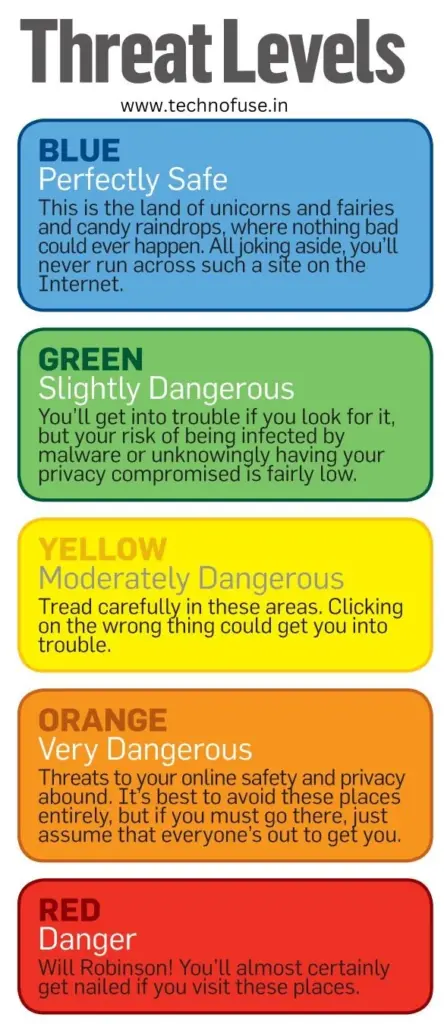The internet is a two-edged sword. On the one hand, it provides endless information, entertainment, and connectivity. On the other hand, it contains dark corners full of potential dangers that may jeopardize your privacy, financial security, and even your physical safety. Understanding these risks is essential for navigating the digital landscape safely.
In this blog post, we’ll look at some of the most dangerous places on the internet and provide practical advice for protecting yourself and your loved ones.
Section 1: Exploring the Dark Web.

What is the dark web?
Traditional search engines such as Google and Bing do not index the Dark Web, a hidden part of the internet. It is accessible through particular browsers such as Tor, providing users anonymity and as a haven for illegal activities.
Why is it considered dangerous?
The Dark Web is known for its illegal marketplaces, where users can buy everything from drugs and firearms to stolen data and counterfeit money. It’s also a breeding ground for cybercriminals who sell illicit goods and services like hacking tools and malware.
Key threats:
- Illegal transactions can have legal ramifications.
- Scams and Fraud: Buyers often lose money due to fraudulent transactions.
- Downloading files from the Dark Web can lead to malware infection.
How to Protect Yourself.
- Refrain from accessing the Dark Web unless you have a valid reason and understand the risks.
- Use security tools. If you need to access it, use reputable security tools such as VPNs and antivirus software.
- Avoid downloading files from untrustworthy sources.
Section 2: Phishing and ID Theft
What is phishing?

Phishing is a method used by cybercriminals to trick people into disclosing sensitive information such as passwords, credit card numbers, and social security numbers. Typically, it involves emails or messages purporting to be from credible sources.
How to Identify Phishing Attempts.
- Check the sender’s email address. Check the sender’s email address for any discrepancies.
- Check for spelling mistakes. Many phishing emails have grammatical and spelling errors.
- Before clicking on links, hover over them to see the URL.
How To Protect Against Phishing
- Use Multi-Factor Authentication (MFA) to increase security and prevent unauthorized access.
- Educate yourself and your family. Keep your family up to date on the latest phishing tactics.
- install and update security software to prevent phishing attacks.
Section 3 – Malware and Dangerous Downloads
Understanding Malware
Malware is malicious software that aims to damage, disrupt, or gain unauthorized access to your computer system. It takes many forms, including viruses, ransomware, and spyware.
Risks of Dangerous Downloads
- Malware can steal sensitive data from your device.
- Malware can damage your system by corrupting or deleting files, making it unusable.
- Ransomware encrypts files and demands payment for their release.
Best Practices for Safe Browsing and Download
- Only download software and files from reputable websites.
- Regularly install and update antivirus software.
- Check file extensions. Be wary of unexpected executable files (.exe,.bat, etc.).
Section 4: Social Media Dangers.
Cyberbullying
Cyberbullying, which occurs when people are harassed or bullied online, can thrive on social media platforms. This can have a significant emotional and psychological impact.
Privacy Concerns
Many users unknowingly share too much personal information on social media, making them vulnerable to identity theft and other malicious activities.
Tips for Safe Social Media Use.
- Regularly review and adjust your privacy settings.
- Avoid sharing sensitive personal information.
- Monitor interactions, particularly with children and teenagers.
Section 5: Online Predators and Risks for Children
Understanding the Risk
Online predators frequently use social media and chat rooms to target children and teenagers. They gain their victims’ trust and manipulate them into disclosing personal information or meeting in person.
Tips for Parents:
- Educate your children about the risks of sharing personal information online.
- Use Parental Controls: Set parental controls for devices and apps.
- Regularly monitor your child’s online activity and address any concerns.
Conclusion
The internet is a powerful tool, but it comes with its dangers. By staying informed about the risks and following the safety tips provided, you can protect yourself and your loved ones from potential threats. Always be cautious when browsing the web, and never hesitate to seek help or report any suspicious activity. Stay safe out there!
FAQ
What should I do if I am a victim of a phishing scam?
If you believe you have been a phishing scam victim, change your passwords immediately and contact your bank or financial institution to protect your accounts.
Is it safe to use public WiFi?
Public WiFi is risky because it exposes your data to possible interception. Use a VPN to encrypt your connection and prevent access to sensitive information on public networks.
How do I know if my computer is infected with malware?
Slow performance, frequent crashes, and unexpected pop-up windows can identify a malware infection. Running a full system scan with reputable antivirus software can assist in detecting and removing malware.
